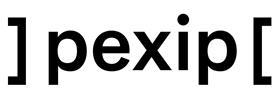As video technology has matured in recent years, so it has been able to play an increasingly central role in providing healthcare at a distance alongside a new generation of digital tools. Many of the legacy objections to its use were overruled by the necessity of continuing patient care remotely during the pandemic. And in healthcare, as in many other industries, the lessons learnt during that time are now being applied in newly developed hybrid systems that combine the best of the traditional approach with the noted operational advantages that video technology brings to the table.
Sponsored by
One of the key areas of interest here lies in the currently overstretched area of patient monitoring services. Patient monitoring effectively enables busy clinicians to provide better care to more patients than can be geographically constrained within the four walls of a hospital. The establishment of what is effectively a virtual hospital as a result provides a step-change in clinical productivity, taking the pressure off the frontline and enabling health systems to look after more patients per monitoring nurse, as well as delivering better outcomes.
There are three prime use cases for the technology which are, as is the nature of healthcare, all interlinked, providing positive outcomes throughout the chain.
In primary care, care monitoring solutions reduce GP and practice workload. Healthcare monitoring and communication with patients wherever they are situated, be it in their own home or in care facilities, reduces demand for GP appointments and visits, and enables timely interventions through proactive care.
The virtual hospital enables the roll out of supported discharge, whereby clinicians can physically discharge patients and monitor them in virtual wards
For hospitals, monitoring patients effectively at home means unplanned and unnecessary admissions can be avoided in primary care. Frequent observations enable problems to be identified with immediate effect while clinicians can also proactively head many problems off before they become serious. The virtual hospital also enables the roll out of supported discharge, whereby clinicians can physically discharge patients and monitor them in virtual wards prior to clinical discharge back to primary care. This frees bed spaces, reduces length of stay, and lowers the number of readmissions.
Lastly, digital healthcare solutions enable elderly patients to stay in their own homes or residential homes, enhancing quality of life and care. This is especially true when it comes to receiving out-of-hospital care for the management of long-term conditions such as chronic obstructive pulmonary disease, hypertension and cardiovascular disease.
While providing significant advantages to healthcare teams and having measurable impacts on the management of overstretched resources, it is important to be cognizant of the fact that video technology alone is not the magic panacea here. It has to be seen as part of an overall solution that also needs to incorporate relevant data analysis to help guide successful outcomes, as well as operate within an ecosystem that provides easy onboarding and discharge, as well as transition between services.
It must also be high quality and easy for everyone to use, both critically at the patient end where new technology can sometimes be seen as a barrier, and at the clinician end where intelligent tools can help significantly ease the workload and have to fit into established workflows and systems. And finally, it must be secure with assurances of encryption and confidentiality maintained as they would be in any face-to-face contact.
The potential for the resulting virtual hospital and virtual ward systems that emerge is tremendous. During the pandemic, the patient monitoring hub at one Liverpool-based healthcare provider reached a ratio of one monitoring nurse to over 400 patients. And with the correct key technology systems in place, those patients received care of the same standard as they would in any physical hospital, enabling clinicians to cost-effectively provide better outcomes for more people than ever before and continually direct their resources to where they are most needed at any given time.
If you would like to learn more about Pexip’s healthcare solutions, please click here.


























